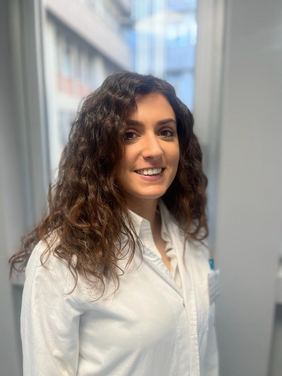Crohn’s disease phenotype analysis with iodine density from dual‐energy CT enterography
Dane B, Li X, Goldberg JD, O'Donnell T, Le L, Megibow A
Abdom Radiol (NY). 2023;48(7):2219-2227. doi:10.1007/s00261-023-03923-z
This study investigated the correlation between dual-source dual-energy CT enterography (dsDECTE) iodine density and Crohn's disease phenotypes, providing insights into disease progression and severity.
The Society of Abdominal Radiology and American Gastroenterological Association (SAR-AGA) jointly developed recommendations for interpreting CT enterography in small bowel Crohn's disease [1]. These guidelines introduced a morphological framework to describe the inflammation and progression of Crohn's disease [2, 3]. Transmural inflammation often leads to complications like strictures, sinus tracts, fistulas, and abscesses [4, 5]. Consequently, the consensus statement grouped imaging findings into Crohn's disease patterns or phenotypes, reflecting different stages of disease activity and severity:
- Crohn’s disease with no imaging signs of active inflammation
- Active inflammatory small bowel Crohn’s disease without luminal narrowing
- Active inflammatory small bowel Crohn’s disease with luminal narrowing
- Stricture without active inflammation
- Stricture with active inflammation
- Penetrating Crohn’s disease
CT enterography is the recommended modality to assess and monitor Crohn's disease activity [6]. Spectral CT has the unique advantages over conventional CT to achieve material differentiation, shifting the paradigm from qualitative to quantitative imaging. This holds particularly true for iodine density [7], which correlates with inflammation and disease activity better than Hounsfield Units [8]; however, no previous investigations correlated iodine density with Crohn’s disease phenotypes as defined by the SAR-AGA consensus.
The initial population consisted of 451 patients with “Crohn’s disease” in the radiology report, scanned from May 2017 to December 2021. After excluding patients with no Crohn’s disease diagnosis based on clinical or endoscopic assessment, no endoscopy within 4 months of CT, and no subsequent ds-DECTE, final patient population included 50 patients (31 males, 19 females).
Each patient underwent dsDECTE on a third-generation dual-energy CT scanner, small bowel distention was obtained by administration of 900 mL of neutral oral contrast medium, while a single acquisition was performed after i.v. contrast medium injection based on patient’s weight.
Two readers, blinded to dual-energy CT iodine density, clinical information, and original radiology report, categorized Crohn's disease as follows:
- Group 1 - stricture without active inflammation (n= 4)
- Group 2 - no active inflammation (n= 12)
- Group 3 - active inflammation without luminal narrowing (n= 2)
- Group 4 - active inflammation with luminal narrowing (n= 13)
- Group 5 - stricture with active inflammation (n= 9)
- Group 6 - penetrating disease (n= 10)
Subsequently, small bowel mural iodine density and mural iodine density normalized to the aorta were semiautomatically determined. Mean iodine density was 2.14 ± 1.1 mg/mL for groups “1 or 2”, 3.54 ± 1.7 mg/mL for groups “3 or 4”, and 5.50 ± 3.3 mg/mL for group 5, and 3.36 ± 1.4 mg/mL for group 6. The differences among the groups were statistically significant (P = 0.001), especially for groups “1 or 2” versus group 5. Iodine density normalized to the aorta was 21.2 ± 6.1% for groups 1 or 2, 39.47 ±9.7% for groups 3 or 4, 40.98 ± 11.7% for group 5, and 35.01 ± 7.6% for group 6. Also the differences were statistically significant (P < 0.001), especially when comparing groups “1 or 2” versus the other groups.
Limitations of the study that may affect the generalizability of the results included: the a single center, retrospective nature of the enrollment, the single-vendor, single-generation dual-energy CT scanner use and the lack of accessible endoscopy for some bowel segments.
These findings were consistent with the disease's varying activity levels and progression, demonstrating both iodine density (mg/mL) and normalized iodine density (I%) potential as markers for disease Crohn’s disease characterization and monitoring.
References:
1. Dane B, Li X, Goldberg JD, et al (2023) Crohn’s disease phenotype analysis with iodine density from dual-energy CT enterography. Abdom Radiol (NY) 48:2219–2227. doi.org/10.1007/s00261-023-03923-z
2. Pariente B, Cosnes J, Danese S, et al (2011) Development of the Crohn’s disease digestive damage score, the Lémann score. Inflamm Bowel Dis 17:1415–1422. doi.org/10.1002/ibd.21506
3. Cosnes J, Cattan S, Blain A, et al (2002) Long-term evolution of disease behavior of Crohn’s disease. Inflamm Bowel Dis 8:244–250. doi.org/10.1097/00054725-200207000-00002
4. Kelly JK, Preshaw RM (1989) Origin of fistulas in Crohn’s disease. J Clin Gastroenterol 11:193–196. doi.org/10.1097/00004836-198904000-00015
5. Oberhuber G, Stangl PC, Vogelsang H, et al (2000) Significant association of strictures and internal fistula formation in Crohn’s disease. Virchows Arch 437:293–297. doi.org/10.1007/s004280000226
6. Guglielmo FF, Anupindi SA, Fletcher JG, et al (2020) Small Bowel Crohn Disease at CT and MR Enterography: Imaging Atlas and Glossary of Terms. Radiographics 40:354–375. doi.org/10.1148/rg.2020190091
7. McCollough CH, Leng S, Yu L, Fletcher JG (2015) Dual- and Multi-Energy CT: Principles, Technical Approaches, and Clinical Applications. Radiology 276:637–653. doi.org/10.1148/radiol.2015142631
8. Kim H, Goo JM, Kang CK, et al (2018) Comparison of Iodine Density Measurement Among Dual-Energy Computed Tomography Scanners From 3 Vendors. Invest Radiol 53:321–327. doi.org/10.1097/RLI.0000000000000446
Antonella Del Gaudio is a 29-year-old third-year radiology resident at Sant’Andrea University Hospital, Sapienza University of Rome. She graduated in medicine at the University of Naples Federico II in 2020 and has a wide range of interest in diagnostic imaging. Her main research interest is gastrointestinal imaging, with a special focus on the applications of artificial intelligence in CT imaging. She is currently working as a research fellow at the Department of Radiology of Duke University, Durham, NC, USA. She has given scientific presentations at many international radiology meetings and she has contributed as a co-author in some scientific publications.
Comments may sent to Antonella.delgaudio(at)uniroma1.it


